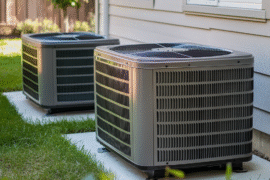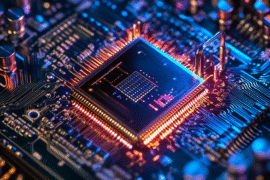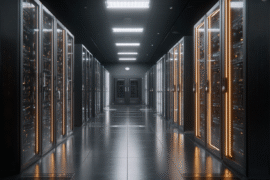This article may contain references to products or services from one or more of our advertisers or partners. We may receive compensation when you click on links to those products or services. Nonetheless, our opinions are our own.
The information presented in this article is accurate to the best of our knowledge at the time of publication. However, information is subject to change, and no guarantees are made about the continued accuracy or completeness of this content after its publication date.

Updated by Albert Fang
Integrating drones into maintenance strategies represents a remarkable advancement in modern technology. The Condition-Based Maintenance Drone has become a cornerstone in redefining traditional maintenance practices. This innovation allows for real-time monitoring and assessment, shifting away from the less efficient routine-based maintenance methods. With the ability to precisely identify when maintenance is required, these drones significantly enhance operational efficiency and reliability.
- Revolutionizing Maintenance Through Drones
- Enhanced Safety and Efficiency
- Cost-Effectiveness of Drone Maintenance
- Data-Driven Maintenance Decisions
- Sustainability and Environmental Impact
- Future Trends in Drone-Assisted Maintenance
- Customization and Adaptability of Drone Technology in Diverse Industries
- Enhancing Predictive Analytics with Advanced Drone Data
- Conclusion
- Recommended Reads
Revolutionizing Maintenance Through Drones
The adoption of drones has fundamentally altered the landscape of maintenance. Traditional methods, typically labor-intensive and time-consuming, are rapidly supplanted by more agile, drone-assisted techniques. They are equipped with advanced technologies such as high-resolution cameras, thermal imaging, and sophisticated sensors. They offer a bird’s-eye view of infrastructure, allowing for quick identification of potential issues. This transformation in maintenance methodology not only streamlines processes but also opens up new possibilities in preventative maintenance.
Enhanced Safety and Efficiency
Employing drones for maintenance tasks substantially elevates the safety and efficiency of operations. Traditional methods often expose workers to hazardous conditions, like working at heights or in small spaces. Drones eliminate these risks by remotely accessing and inspecting these areas. They provide comprehensive, detailed visual inspections across vast facilities in a fraction of the time it would take manually. This efficiency reduces downtime and enhances the overall safety of maintenance personnel.
Cost-Effectiveness of Drone Maintenance
Incorporating drones into maintenance routines offers significant cost benefits. Drones reduce overall maintenance expenses by minimizing the need for scaffolding, lifts, and other equipment typically required for manual inspections. Their ability to quickly and accurately identify problem areas means that repairs can be targeted and executed more efficiently, reducing labor and material costs. The early detection of potential problems helps avoid costly emergency repairs and extends the life of the equipment.
Data-Driven Maintenance Decisions
The comprehensive data collected by drones transforms maintenance from reactive to proactive. This wealth of information enables more accurate forecasting and planning. Maintenance teams can analyze trends over time, predict probable failures before they happen, and schedule maintenance accordingly. This data-centric approach ensures that resources are allocated effectively, enhancing the overall reliability and longevity of the infrastructure.
Sustainability and Environmental Impact
Drones contribute significantly to the sustainability of maintenance operations. They reduce the carbon footprint by decreasing the need for traditional machinery and transportation typically associated with manual inspections. Additionally, drones ensure that maintenance activities comply with environmental regulations, helping companies meet their sustainability goals. Their ability to monitor and report on environmental conditions in real time is invaluable in maintaining ecological balance.
Future Trends in Drone-Assisted Maintenance
The horizon for drone technology in maintenance is continually expanding. Future advancements are expected to integrate more deeply with artificial intelligence (AI) and machine learning, enabling drones to collect and interpret data. This progression will lead to even more sophisticated predictive maintenance capabilities, highlighting various predictive maintenance use cases across industries. Automation in drone operations is another potential growth area, where drones could autonomously conduct routine inspections and identify issues without human intervention.
Customization and Adaptability of Drone Technology in Diverse Industries
Drones offer unparalleled customization and adaptability, making them suitable for several industries with distinct maintenance needs. For instance, drones equipped with multispectral sensors in agriculture can check crop health and soil conditions, enabling timely pest control or irrigation interventions. Drones can inspect buildings, bridges, and public utilities in urban infrastructure, identifying structural weaknesses or damage. This adaptability is crucial in tailoring maintenance strategies to specific industry requirements. It allows for precision and specificity in maintenance tasks that traditional methods cannot match. By customizing their functionalities, drones can provide industry-specific data, leading to more effective maintenance strategies and ultimately extending the lifespan of critical infrastructure.
Enhancing Predictive Analytics with Advanced Drone Data
Integrating drone technology with advanced analytics and predictive modeling marks a significant advancement in maintenance strategies. Drones do not merely collect data; they provide a comprehensive dataset that, when analyzed with sophisticated algorithms, can predict future wear and tear or potential failures. This predictive capability is critical in transitioning from reactive maintenance to a more efficient, predictive maintenance model. For example, in energy sectors like wind and solar farms, drones can predict when a turbine or a solar panel might fail or require maintenance, allowing for preemptive action. This minimizes downtime and productivity, ensuring that maintenance schedules are optimized and resources are utilized effectively. The synergy between drone technology and predictive analytics is setting a new standard in maintenance, making it more informed, anticipatory, and strategically aligned with long-term operational goals.
Conclusion
Adopting Condition-Based Maintenance Drone technology marks a transformative shift in maintenance strategies. This evolution brings numerous benefits, including enhanced safety, efficiency, cost-effectiveness, and a reduced environmental footprint. As drone technology advances, it promises to revolutionize the maintenance field further, making it more proactive, data-driven, and aligned with sustainability goals.

Reviewed and edited by Albert Fang.
See a typo or want to suggest an edit/revision to the content? Use the contact us form to provide feedback.
At FangWallet, we value editorial integrity and open collaboration in curating quality content for readers to enjoy. Much appreciated for the assist.
Did you like our article and find it insightful? We encourage sharing the article link with family and friends to benefit as well - better yet, sharing on social media. Thank you for the support! 🍉
Article Title: Exploring How Drone Advancements Are Transforming Traditional Maintenance Strategies
https://fangwallet.com/2024/02/02/exploring-how-drone-advancements-are-transforming-traditional-maintenance-strategies/The FangWallet Promise
FangWallet is an editorially independent resource - founded on breaking down challenging financial concepts for anyone to understand since 2014. While we adhere to editorial integrity, note that this post may contain references to products from our partners.
The FangWallet promise is always to have your best interest in mind and be transparent and honest about the financial picture.
Become an Insider

Subscribe to get a free daily budget planner printable to help get your money on track!
Make passive money the right way. No spam.
Editorial Disclaimer: The editorial content on this page is not provided by any of the companies mentioned. The opinions expressed here are the author's alone.
The content of this website is for informational purposes only and does not represent investment advice, or an offer or solicitation to buy or sell any security, investment, or product. Investors are encouraged to do their own due diligence, and, if necessary, consult professional advising before making any investment decisions. Investing involves a high degree of risk, and financial losses may occur including the potential loss of principal.
Source Citation References:
+ Inspo












































